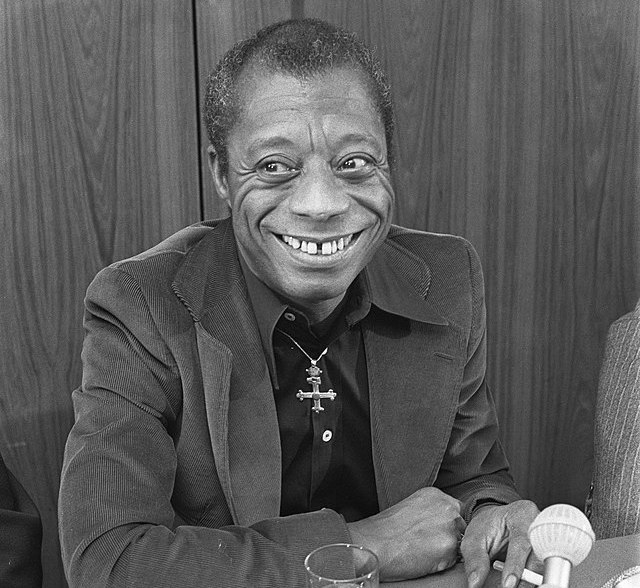Things to do in Salzburg
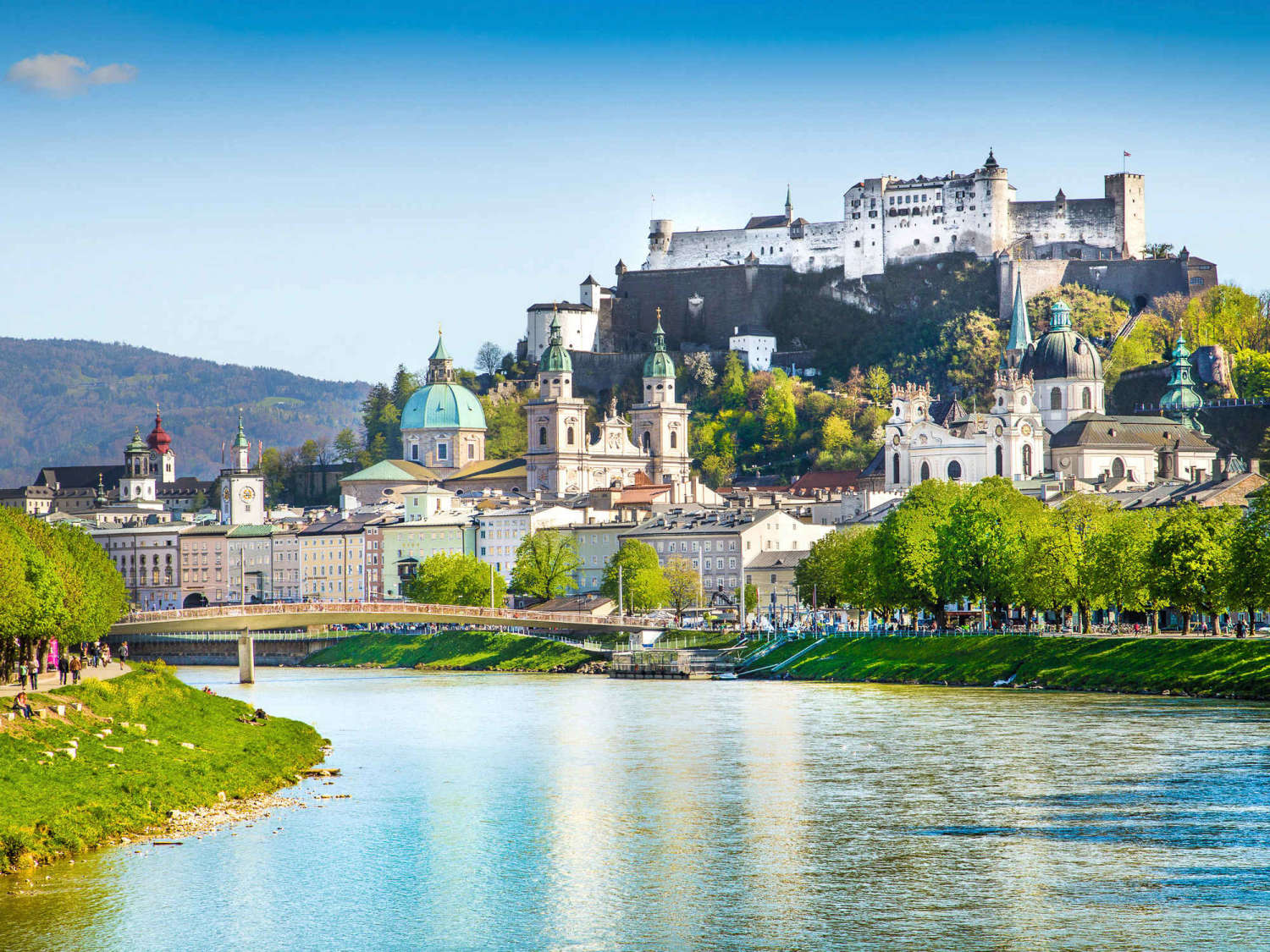
City of Salzburg
Nestled between the Salzach River and the Alps, Salzburg is one of Europe’s most beautiful cities. With its rich culture, Baroque architecture, breathtaking alpine landscape, and a vibrant culinary scene, a trip to Salzburg makes for an unforgettable experience.
The Stage of the World
Salzburg is a charming city that has gained the nickname “The Stage of the World” due to its rich artistic and cultural heritage. As the birthplace of Mozart and the idyllic setting for "The Sound of Music," Salzburg is a beloved destination for music lovers.
The Salzburg Festival, the city’s most popular event (running through August 31), draws more than 250,000 people each year—more than the city’s entire population! The Festival was founded in 1920 under the leadership of famous theater director Max Reinhardt, writer Hugo von Hofmannsthal, and composer Richard Strauss. And today, it's one of the most prestigious music events in the world, showcasing the best in classical as well as contemporary music, with around 200 performances by top international artists.
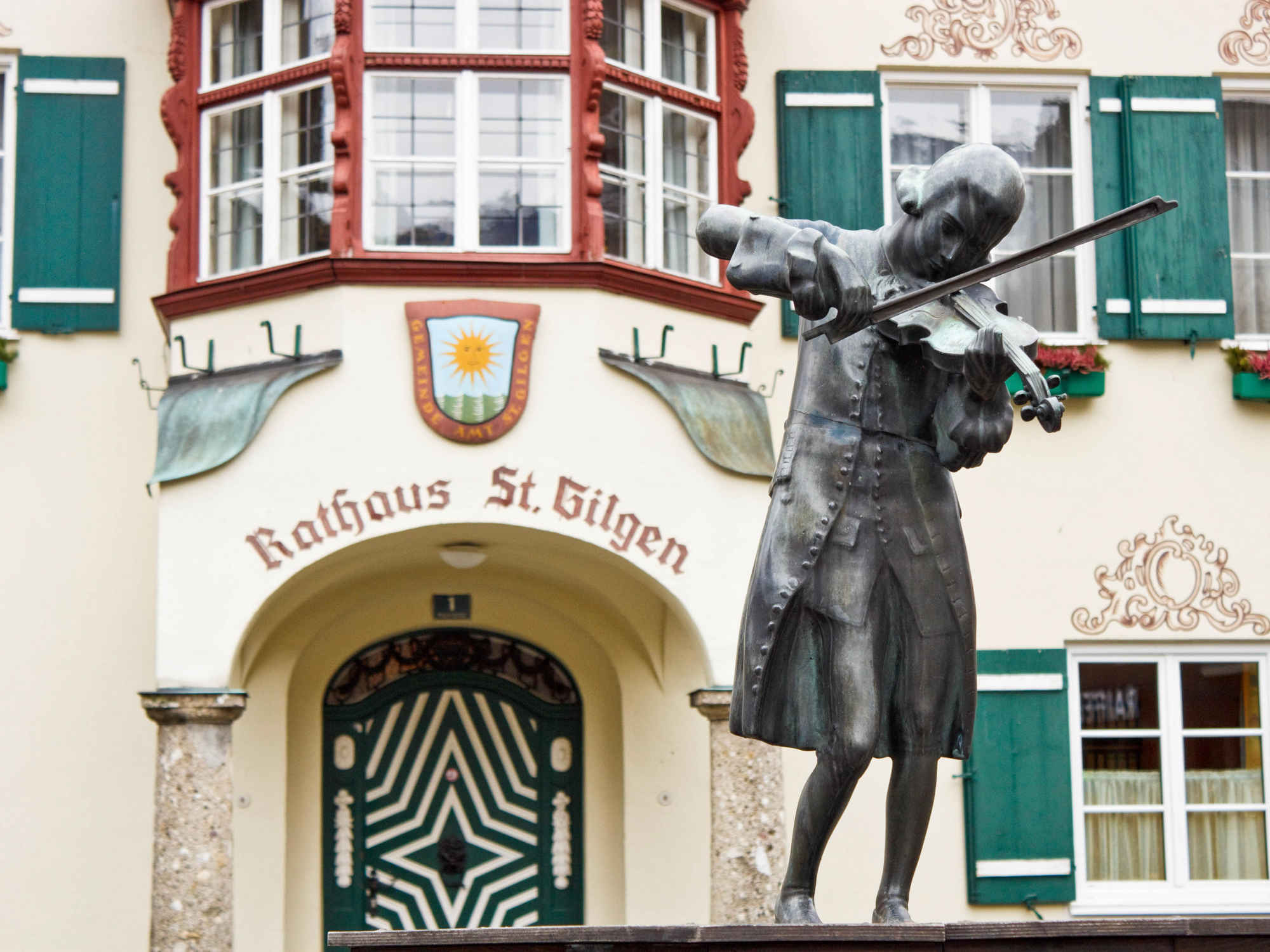
One can’t talk about Salzburg’s musical heritage without mentioning Wolfgang Amadeus Mozart, one of the most talented composers of all time. Mozart was born in Salzburg in 1756 at Getreidegasse #9. Known as the Hagenauer Haus, Mozart’s childhood home is now a museum that documents his life in Salzburg. Mozart fans will particularly enjoy seeing his violin and clavichord on display.
Another Mozart landmark, the Mozart Residence on Makartplatz Square, is the house his family moved to in 1773. The residence has also been transformed into a museum, where visitors can view original documents and portraits, as well as Mozart’s fortepiano. In addition to the museums, the Mozart Monument on Mozart Square pays tribute to the city’s most famous son. The nonprofit Mozarteum Foundation Salzburg even hosts “Mozart Week,” an annual festival that brings together the best Mozart interpreters.
Another part of Salzburg’s musical heritage that can’t be ignored is the iconic 1960s film “The Sound of Music.” Despite being not-so-popular in Salzburg, the movie brought international acclaim and recognition to the city. The Oscar-winning film recounts the life of the real Von Trapp family and highlights many of the city’s historical landmarks, including the Mirabell gardens, the Festival Hall, Nonnberg Abbey, Leopoldskron Palace, Hellbrunn Palace, Mondsee, and the picturesque countryside. Join our Sound of Music Tour: Von Trapps Unveiled to learn more about the film’s history and setting from a local historian.
More than a musical history
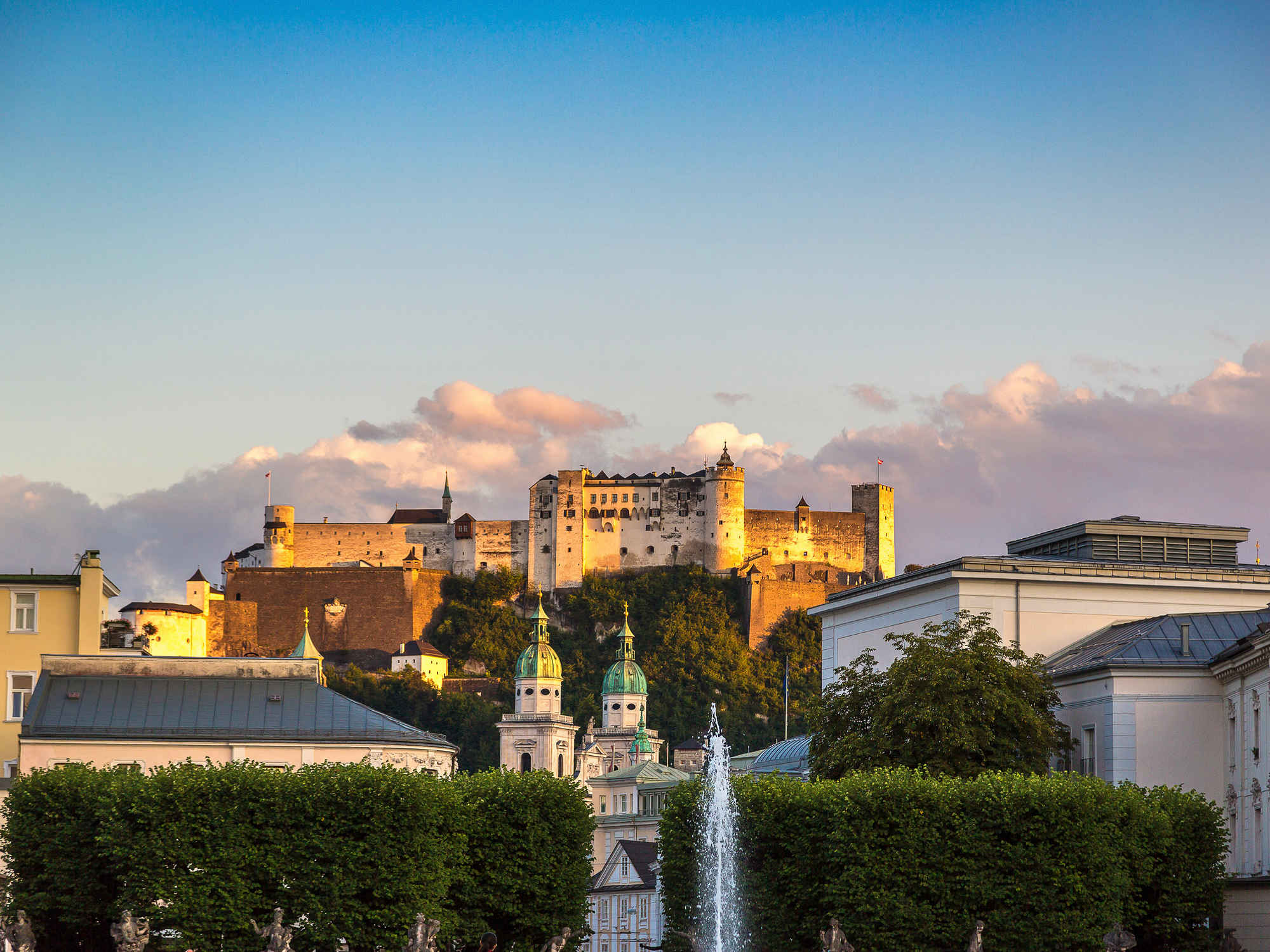
Salzburg is not just for lovers of the arts. Ruled by Prince-Archbishops for several centuries, the city was a meeting point between northern and southern Europe, made wealthy by its salt, gold and silver mines. The former city-state was largely influenced by German and Italian culture until it became a part of Austria in 1816. Today, the city’s beautiful setting, exquisite architecture, historic monuments, and numerous attractions make it a fascinating place to explore.
The Hohensalzburg Fortress is the city’s most recognizable landmark and the largest intact fortification in Europe. The medieval clifftop castle can be accessed via the glass Festungsbahn funicular. The mighty fortress offers magnificent views of the city, the Salzach River, and the mountains. Inside the fortress, you can check out the ornate Golden Hall, with a gilded ceiling designed to imitate a starry night sky. The Fortress Museum offers visitors insight into the history of the city.
Scenic Salzburg
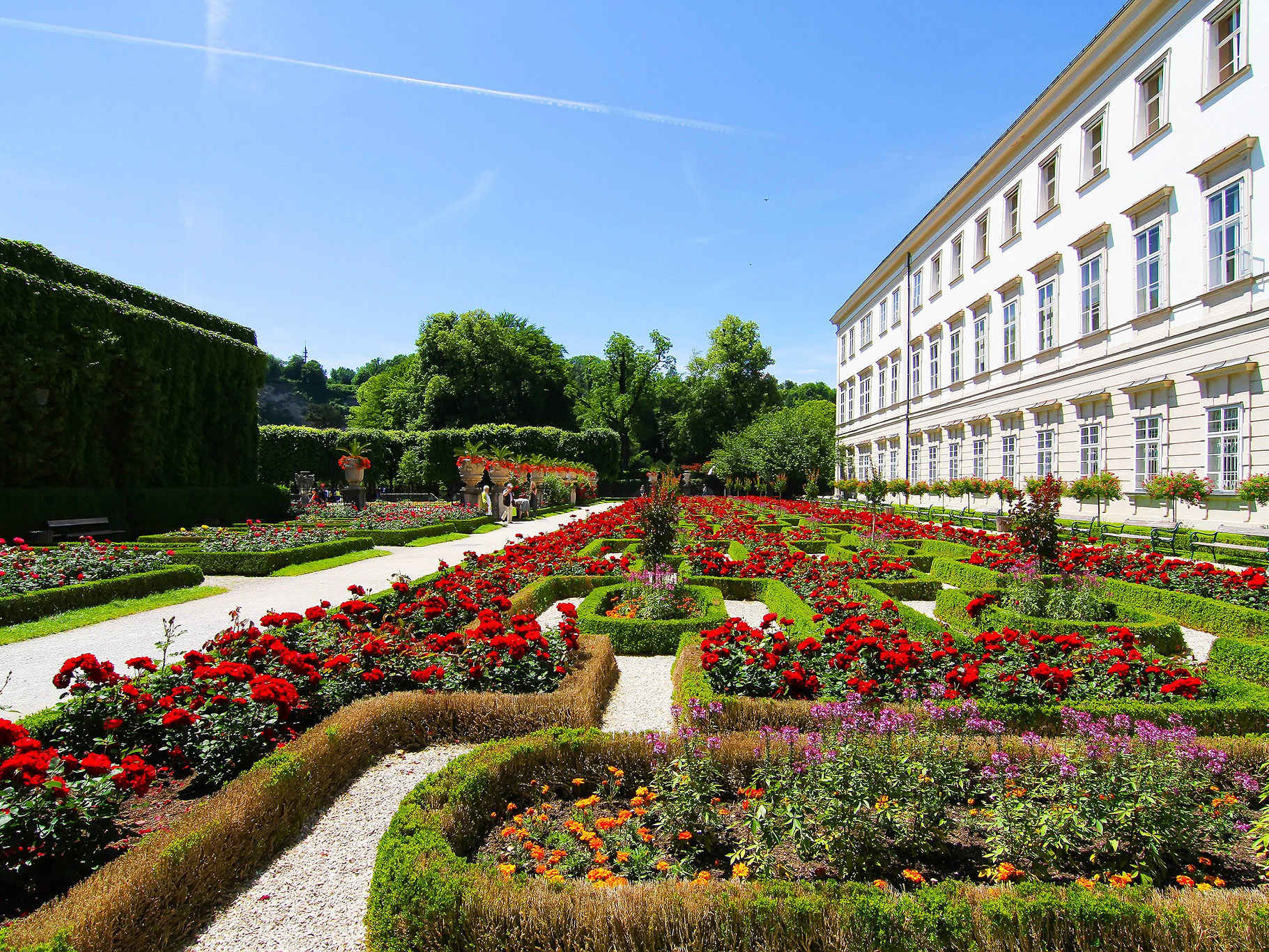
Mirabellplatz, located in the heart of the city, was built in 1606 by the Prince-Archbishop Wolf Dietrich for his mistress Salome Alt. The palace is now home to municipal offices and the mayor’s office. Its Marble Hall is a stunning venue that hosts weddings, concerts and award ceremonies. The beautifully designed Baroque style Mirabell Garden, one of the most important shooting locations in "The Sound of Music," features the iconic Pegasus Fountain, as well as one of the oldest hedge theaters in the region, marble statues, and a rose garden.
Picturesque Altstadt is the historic city center. It is a UNESCO World Heritage site with a unique mix of medieval and Baroque architecture. Altstadt is characterized by its many churches, whose cupolas and spires shape the city’s distinct skyline, as well as by the colorful Baroque houses on both sides of the Salzach River. Its narrow streets are filled with cafés, fashion boutiques, and artisanal shops displaying local craftsmanship. The Museum der Moderne Salzburg, Salzburg’s modern art museum, offers some of the best views of the city from the Mönchsberg, a mountain in the center of Salzburg's Old City. Built from marble and glass, it houses an impressive collection of twentieth and twenty-first century art.
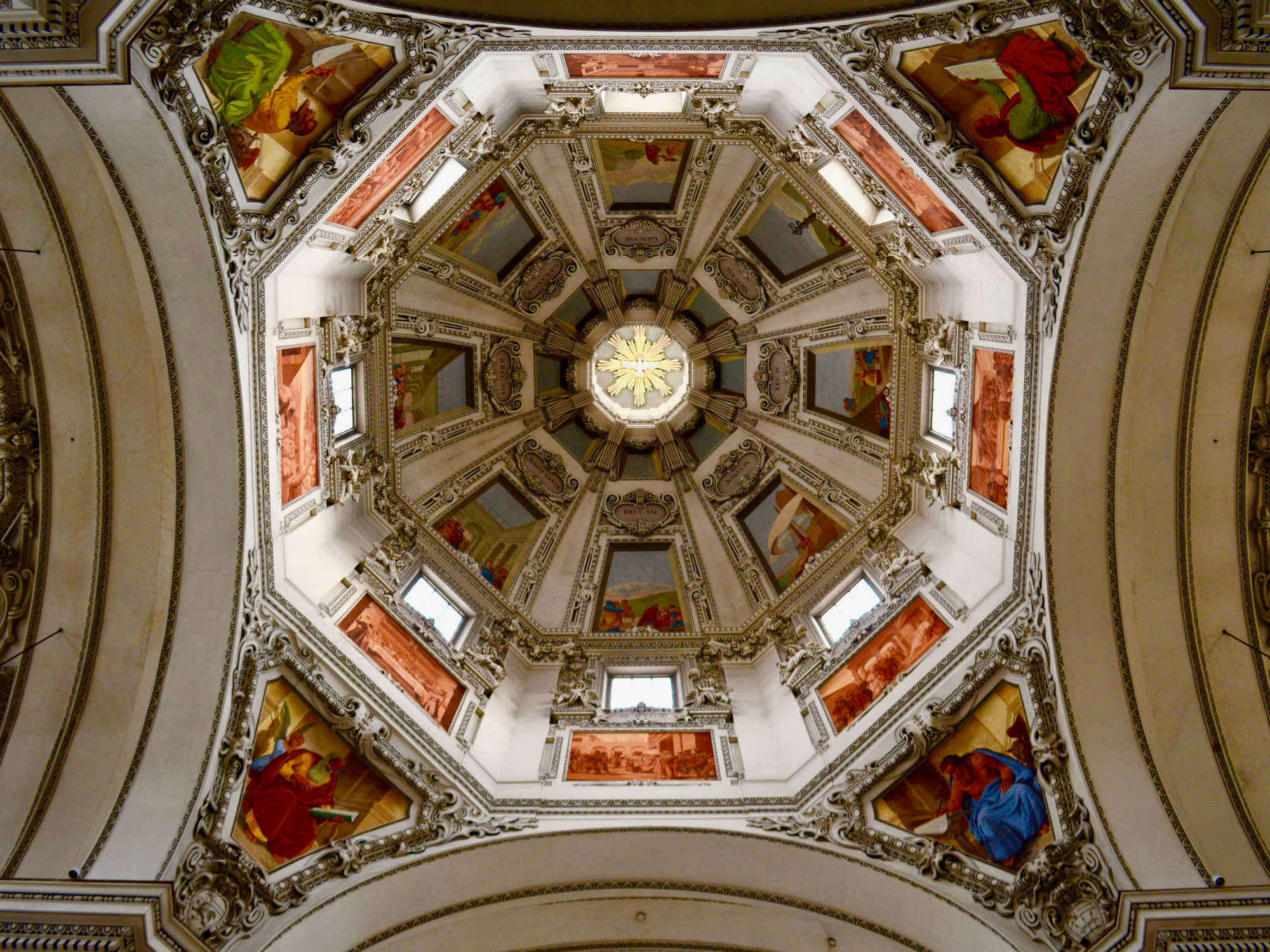
The romantic historic district is also home to the Salzburg Cathedral, a stunning seventeenth century Baroque structure. It is the city’s most important religious building and one of the most visited attractions in Salzburg. Both Mozart and Joseph Mohr, the priest who wrote the words of the Christmas carol “Silent Night,” were baptized at the cathedral. In front of the cathedral, the marble Marian Statue stands at the center of the Domplatz (Cathedral Square), which is the site of the Salzburg Festival performances as well as the Salzburg Christkindlmarkt during the winter. Join our Introduction to Salzburg: Archbishops, Castles, and Palaces to learn more about Salzburg’s history, the city center, and its most famous landmarks from a local historian.
Located south of the city’s historical center, Schloss Leopoldskron is a majestic palace on the beautiful Leopoldskron pond, set against a backdrop of mountains. The palace was built in 1736 by Archbishop Leopold Anton Freiherr von Firmian, who so loved the estate that he had his heart buried below its chapel, though his body was buried at Salzburg Cathedral. In 1918, Max Reinhardt purchased the Schloss Leopoldskron, and it became the birthplace of the Salzburg Festival. The palace was also featured in The Sound of Music.
Savoring Salzburg
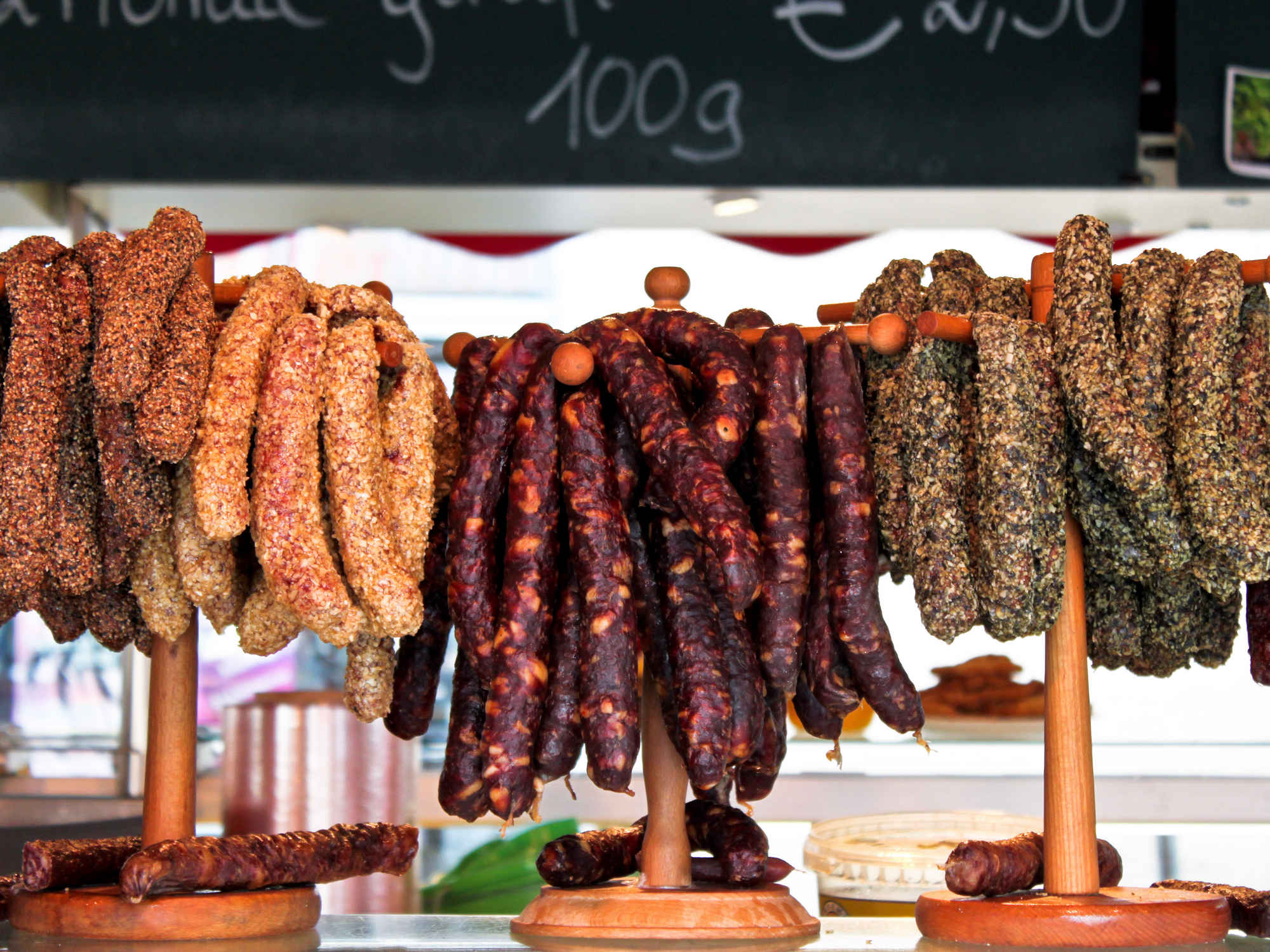
Salzburg will delight all your senses, including your palate. Enjoy traditional Austrian fare and great beer at Augustiner Bräu, a restaurant and beer tavern that dates to 1621. At the weekly Schrannenmarkt and Kajetanerplatz Market, and the daily Grünmarkt, you can shop and sample delicious cheeses, fish soup, fried chicken, sausages, cured meats, pretzels, strudels, traditional pastries, and more. Develop a taste for Salzburg cuisine and learn about Austrian food traditions in our Savoring Salzburg Food Tour!
Salzburg, like the rest of Austria, has a strong café culture, especially among creatives. Stop by Café Tomaselli, Austria’s oldest coffee shop dating back to 1700 and purportedly frequented by Mozart. You can order a mélange (an Austrian cappuccino) or an einspänner (coffee topped with whipped cream) with a piece of cake or a Salzburger Nockerl, a traditional dessert made of whipped egg whites. Be sure to visit Cafe Konditorei Fürst to try the Mozartkugel, a pistachio marzipan and nougat enrobed in dark chocolate. The shop was founded by Salzburg confectioner Paul Fürst, who invented the Mozartkugel in 1890.
Salzburg is a wonderful destination that offers the best in Austrian culture, historic landmarks, idyllic scenery and culinary delicacies. A cultural hub during the summer months with the Salzburg Festival, the city is equally fun to visit during the festive winter months with its Christmas lights and markets. Visitors to Salzburg are sure to be delighted by the city’s many charms and wonders.
Want to learn with a true expert? Get a comprehensive view with one of Context's private or small group tours in Salzburg!
Even More from Context
We're Context Travel 👋 a tour operator since 2003 and certified Bcorp. We provide authentic and unscripted private walking tours and audio guides with local experts in 60+ cities worldwide.
Search by CityKeep Exploring








